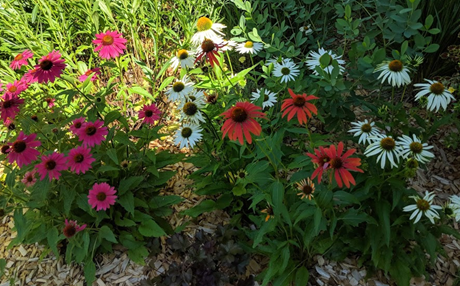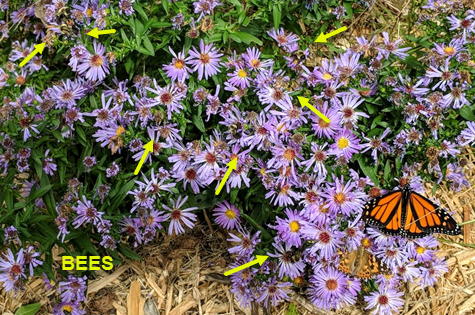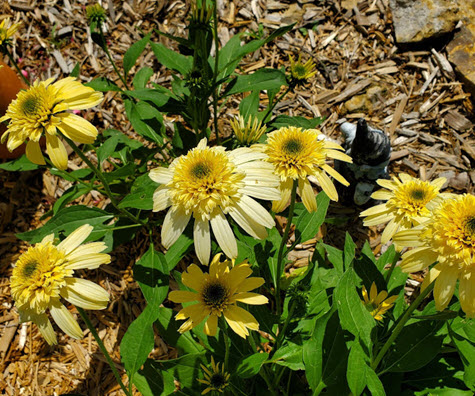Click below to listen to my 2 min. Garden Bite radio show: Nativars
Reading my favorite magazine, Northern Gardener, I came across an article titled ‘Nativars’ by the Editor, and a friend of mine, Mary Schier. These are plants which are cultivars of our native plants. There are a LOT of them.

Think coneflowers alone and you’ll think of plenty from that native purple one.

The question posed in the article is how much a native plant can be changed and still perform it’s environmental functions like providing food and nesting sites and being larval hosts for our pollinators, birds and other wildlife. (Note: to read the article online, you need to be a member. It’s a fantastic publication!)

No one knows entirely but there ARE differences with some cultivars better than others.

If you’re more concerned about pollinators, avoid double flowers which are created by hybridizers that convert a plant’s stamens to petals. Stamen is where the pollen is, no stamen then no pollinators.

Know if the cultivar you want is a “selection” or a “hybrid”. Selections were found in nature or a garden and reproduced through cuttings making them genetically the same. Hybrids are created in a lab and reproduced through cuttings or tissue culture. Anything double flowered is a hybrid.
Remember too, that most nativars are sterile, meaning no seeds for birds.
As Mary says, gardening is a balancing act. We can provide other means, such as leaving plant debris up for winter, don’t use pesticides and plant natives along with your cultivars.

Here is a list of some of the Best Nativars for pollinators from research done by North Dakota State University, Mt. Cuba Center and the University of Vermont:
- Beebalm aka Monarda – M. fistulosa and M. punctata attracted the most pollinators by far. of M. didyma cultivars ‘Marshall’s Delight’ performed best.
- Coneflower aka Echinacea purpurea – ‘Pica Bella’ was the best of hundreds of the cultivars trialed. Others included ‘Fragrant Angel’, ‘Sensation Pink’, ‘Glowing Dream’.
- False Indigo aka Baptisia spp – ‘American Goldfinch’, ‘Grape Taffy’ and ‘Indigo Spires’, ‘Lemon Meringue’, ‘Purple Smoke’.
- Joe-pye-weed aka Eutrochium – ‘Little Joe’ and ‘Gateway’.
